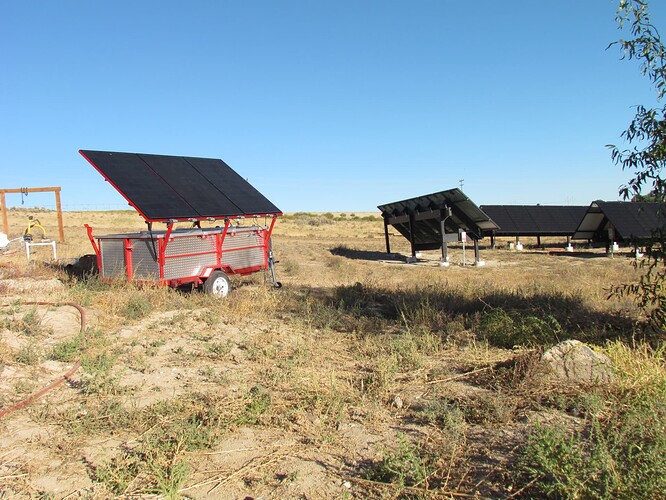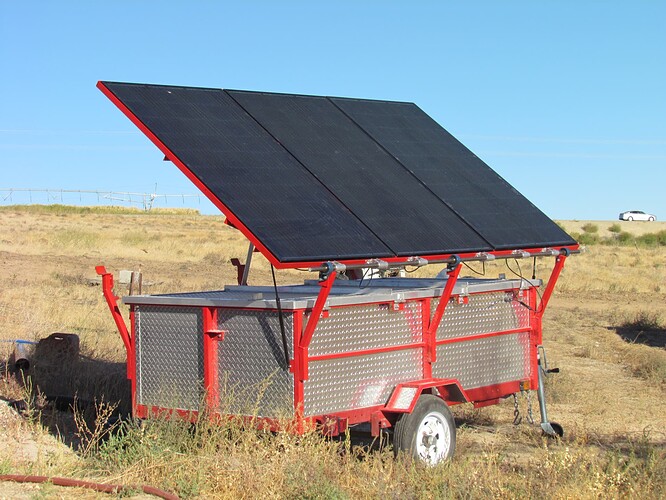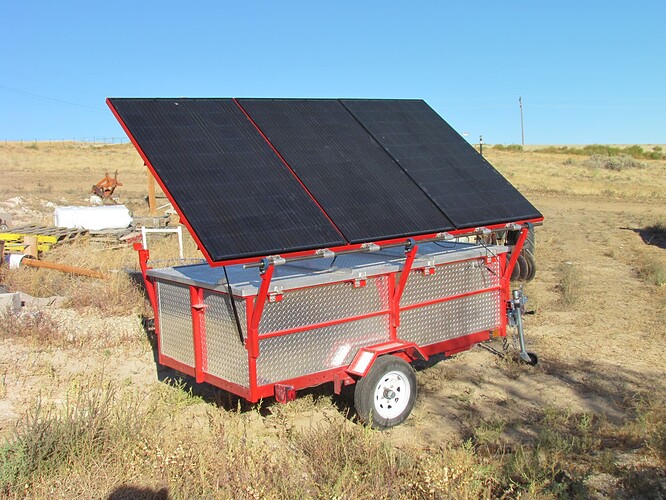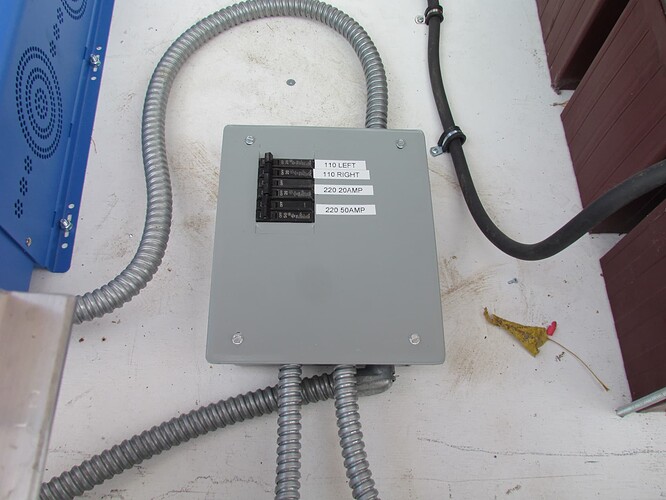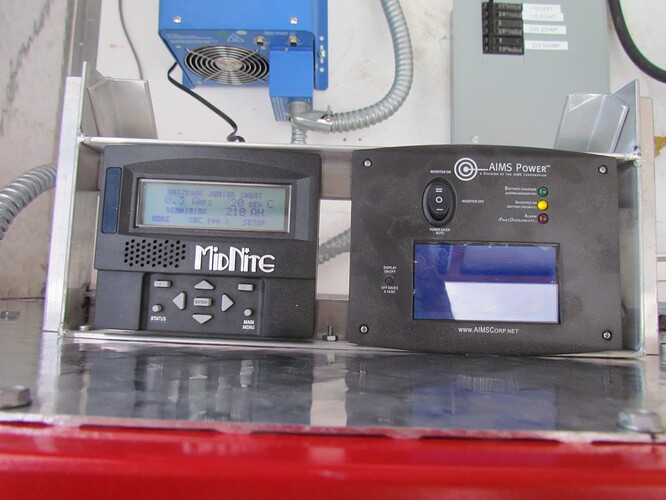There’s a new thing on our hill with an awful lot of batteries and solar panels - and it’s something I’m going to call “Solar Trailer Prototype #1” for reasons that… well… should be obvious. It’s a solar trailer, first prototype. As my wife pointed out, “You know, we have a lot of solar panels on the hill.”
Not to be too blunt, but… I mean, it’s a trailer. With solar. Woah. This particular one has most of 1000W of panel.
What’s inside? Well, mounting solar panels on a trailer isn’t terribly useful unless you can do something more productive with them, and we most certainly can. Inside, there’s a 48V battery bank of Trojan T105s (12kWh nameplate, but FLA being FLA, rather less in practice on a typical day with a high current draw), a massive 6kVA split phase inverter, a Midnite 150 charge controller, and some various other goodies to connect everything together.
The sun. It powers the trailer!
The main goal of the trailer being to power things, there are some outlets on the side. There’s a 30A generator inlet for charging in the top left, a 14-50 for powering dryers and EV chargers in the lower left, a pair of 20A 120V outlets in the middle, and a 20A/240V outlet on the far right. Not pictured here, a couple 120V inlets in the back that could, say, charge things from the backup outlets on my Sunny Boys.
Inside, the split phase inverter feeds what would be a fairly small breaker panel for a house, and is a rather larger panel for a trailer. But, done properly, everything is run in conduit and has breakers for both overload protection (the inverter can put a lot more than 20A out into a single 120V load), and for disconnection purposes.
It would be really inconvenient to have to lean over and poke the charge controller and such on the backside of the trailer from where it opens, wouldn’t it? Fortunately, we’ve got the controllers run over where you can just lift the lid and see what’s up, with full control of everything!
@Canem and I have been working on this concept for a while, and all the physical work is his. So, if you need something that looks insanely good built, ping him.
Ever since Jimmie kept rejecting my solar plans for battery backed stuff, I’ve been wanting something that would give me some backup capability for the house, that I can charge with solar, etc. My concept had been a solar trailer for a while - batteries, inverters, and some panels. Of course, I don’t work in metal (I work in wood), so I couldn’t have created anything nearly this nice. Fortunately @Canem does this kind of thing for a living, and we’re both interested in both the capabilities of a trailer like this, and the commercial potential for such. There have been some states doing less-than-great with their power grid lately, and with the whole arc of empire thing heading down, backup power seems a good market to try and enter!
This is the first iteration, which has both proved useful in service (running a sports camp a month or two ago and hopefully a movie night this week), and has proved a useful R&D exercise for what matters and what doesn’t - and, 2021 being 2020 Mk 2, of course we can’t get half the stuff that was used to build this one, like “the trailer frame.”
But the trailer is a bit over 1000 lbs, which means just about anything can tow it - including the Volt, which now has a receiver installed for the towing of “things like this.” I can charge the car from it, should I care to drag the trailer with me. I can run… well, really, just about anything from it. The welding of some later parts of this build were done with the power from the trailer. It will run damned near anything you can come up with, from the 6kVA inverter that will surge up to 18kVA for 20s (if the battery bank holds up - the bank is somewhat undersized for what it ought to be, based heavily on the fact that we couldn’t get anything and had to build around a used collection of batteries).
I beat on it today, in preparation for a movie night later this week - no good learning that the trailer’s capacity is drained 10 minutes before the end of The Princess Bride, is it? The battery bank held a C/6 load for 4.5 hours, which isn’t half bad for lead, and I got 140Ah out of the bank before low voltage cutoff triggered on a 30A load (at the battery voltage) - about 6.5kWh. Less than rated, by far, but I was also pulling a pretty good load from it, on cold batteries, and all that combines to reduce effective capacity of lead - plus, the pack has a few years service already.
Missing from photos is the 120V AC inlet that will go to a 900W battery charger, which I can feed with my office generator, should we need more power. I also don’t have the 12V subsystem installed, which will provide for phone chargers and the like.
What would you use a trailer like this for? We’ve got plenty of ideas, but I expect other people would want it to do things we haven’t considered!
